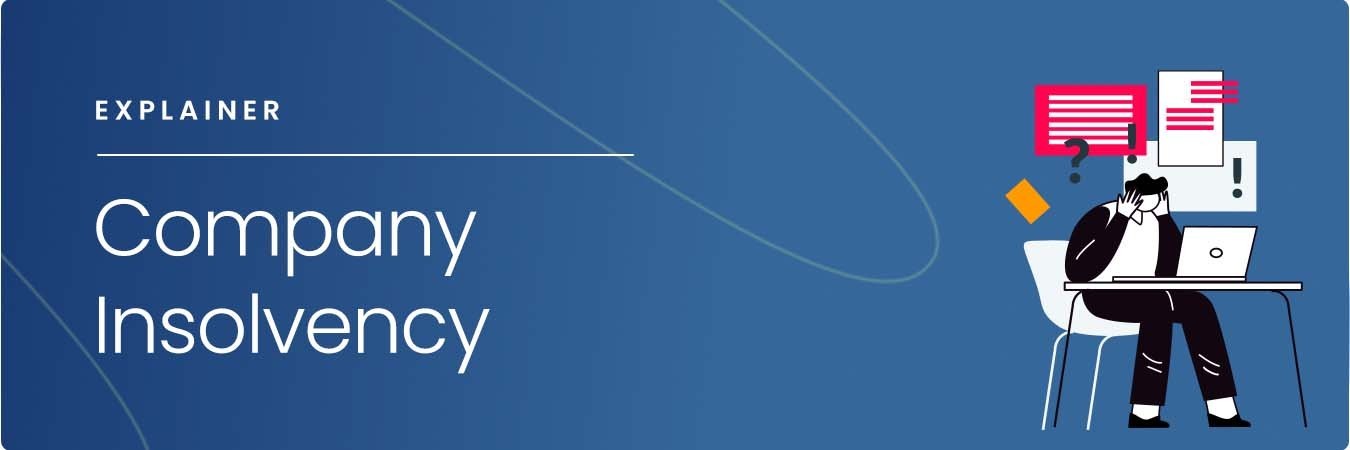Insolvency Practitioner - An Overview
Insolvency Practitioner - An Overview
Blog Article
Insolvency Practitioner Fundamentals Explained
Table of ContentsThe Ultimate Guide To Insolvency Practitioner4 Easy Facts About Insolvency Practitioner DescribedInsolvency Practitioner Fundamentals ExplainedThe Basic Principles Of Insolvency Practitioner Not known Details About Insolvency Practitioner What Does Insolvency Practitioner Mean?Our Insolvency Practitioner Statements
Insurance is kept an eye on and regulated by state insurance coverage departments, and one of their key goals is protecting policyholders from the danger of a firm in economic distress. When a company enters a duration of monetary difficulty and is not able to meet its commitments, the insurance commissioner in the business's home state launches a processdictated by the regulations of the statewhereby efforts are made to assist the company regain its monetary ground.If it is figured out that the business can not be restored, the firm is proclaimed bankrupt, and the commissioner will ask the state court to buy the liquidation of the firm. The insurance coverage commissioner, either assigned by the guv or elected, heads the state insurance department and displays and controls insurance coverage task within the state.

[Back] By getting control of a company, the commissioner (or the insurance coverage division) is, by regulation, the rehabilitator or liquidator of the business. In this capacity, the commissioner or division takes control of the business's procedures. Rather than do so directly, the commissioner may maintain a special replacement receiver to oversee the firm's tasks.
A Biased View of Insolvency Practitioner
The receiver supervises an accountancy of the business's assets and obligations and carries out the estate of the business. In doing so, the receiver seeks to take full advantage of the company's properties, move them to money, and afterwards distribute that cash money to creditors having valid insurance claims against the insurance firm based on repayment top priorities specified by state legislation (in all states, insurance policy holders are priority complaintants whose cases are paid before those of general lenders).
All insurance provider (with minimal exemptions) certified to offer life or medical insurance or annuities in a state should be participants of that state's guaranty organization. The guaranty association complies with the commissioner and the receiver in pre-liquidation preparation. When the liquidation is purchased, the guaranty organization supplies coverage to the business's policyholders that are state locals (up to the degrees specified by state lawssee below; any type of advantage quantities over the warranty asociation benefit degrees end up being insurance claims versus the business's remaining possessions).
The above insurance coverage levels use separately for each insolvent insurer. When an insurer fails and there is a shortfall of funds needed to meet the obligations to insurance policy holders, state guaranty associations are activated. Warranty organizations have subrogation civil liberties to a proportionate share of the assets staying in the failed insurance provider.
Rumored Buzz on Insolvency Practitioner
Second, insurance firms doing business in that state are analyzed a share of the amount called for to satisfy the part of the guaranty organizations' covered insurance claims not or else moneyed with estate properties. The quantity insurance firms are analyzed is based upon the quantity of costs that they collect because state. [Back] The National Company of Life and Medical Insurance Warranty Organizations (NOLHGA) is comprised of the life and wellness insurance policy warranty associations of all 50 states and the Area of Columbia.
NOLHGA best site establishes a task force of depictive warranty organizations to function with the insurance policy commissioner to create a plan to secure policyholders. For more information on NOLHGA's function while doing so, see "What Is NOLHGA?" and "The Safeguard at the office." [Back]
You are below: Bankruptcy is when a business or person can not pay financial obligations when they schedule. There are a number of options readily available to a bankrupt firm or person: ASIC regulates companies, it does not take care of individual insolvency procedures. For additional information concerning personal bankruptcy and individual bankruptcy contracts, go to the Australian Financial Safety Authority site.
Not known Facts About Insolvency Practitioner
Anticipating protection by helping you pick the best consumers and the appropriate markets to prevent negative financial debt in the initial location, thanks to acute economic analysis (Insolvency Practitioner). Comprehensive market knowledge, giving you with 360-degree visibility on organization sectors and putting at risk troubles. It would be a simplification to assume a profession credit scores insurance begins and finishes with premiums and pay-outs
This can occur for a variety of reasons, including inadequate financial management, unforeseen costs, or a modification in the market. If a firm is bankrupt, it may be compelled to shut down or liquidate assets to pay financial institutions. This can have a significant influence on the business, employees, and shareholders.
What Does Insolvency Practitioner Mean?
It can result in task losses, possession sales, and even insolvency. It is necessary to recognize how corporate insolvency works and how it can affect your business. Why does a firm participate in bankruptcy? There are a variety of reasons that a business might become part of insolvency. One of the most usual factor is that the firm is not able to look at here pay its financial debts as they fall due.

The Buzz on Insolvency Practitioner
This can have major ramifications for the business, its stakeholders, lenders and the economic climate. The firm might be required to offer possessions, gave up personnel or also shut down. This can have a knock-on impact on the local area and the economic climate as a whole. Creditors may be overlooked of pocket and the firm's shareholders might see their financial investment disappear.
This can happen for a variety of reasons, consisting of inadequate monetary management, unforeseen costs, or a change in the marketplace. If a business is insolvent, it may be forced to fold or sell possessions to pay financial institutions. This can have a major influence on business, staff members, and shareholders.
Little Known Questions About Insolvency Practitioner.
It can bring about task losses, asset sales, and also insolvency. It is essential to recognize exactly how business bankruptcy works and exactly how it can influence your company. Why does a business participate in bankruptcy? There are a variety of factors why a company may get in right into insolvency. The most usual reason is that the business is unable to pay its financial obligations as they drop due.
Various other reasons for insolvency include scams, mismanagement, and unforeseen expenses. Bankruptcy can additionally lead to task losses and the closure of companies.
This can have significant effects for the firm, its stakeholders, financial institutions and the economic climate. The business may be forced to market assets, lay off team and even fold. This can have a ripple effect on the regional community and the economic view situation in its entirety. Financial institutions may be excluded of pocket and the firm's shareholders may see their financial investment disappear.
Report this page